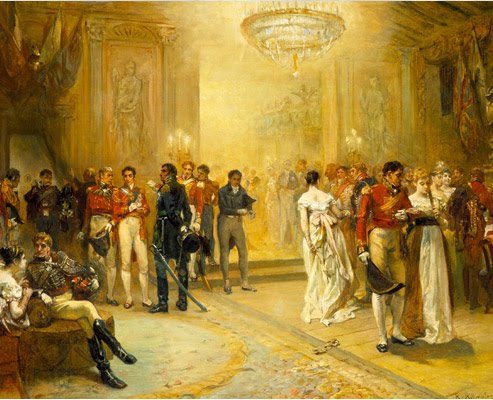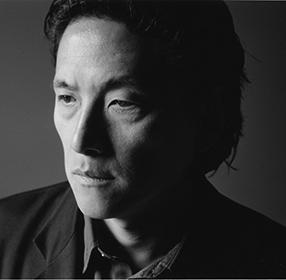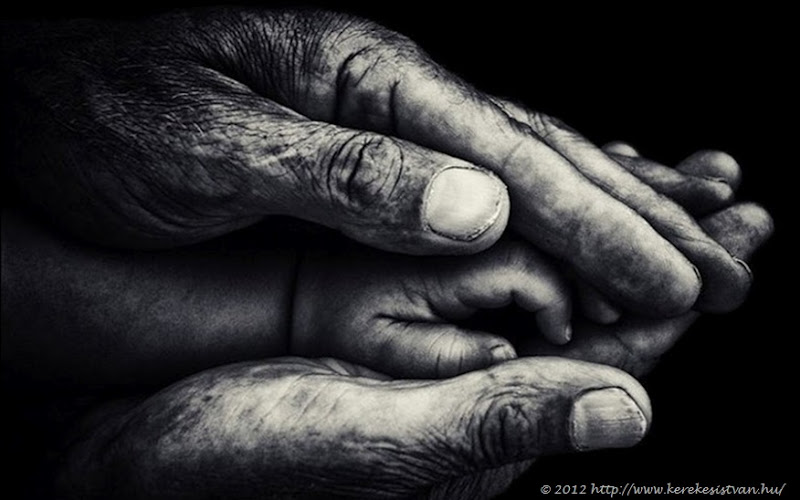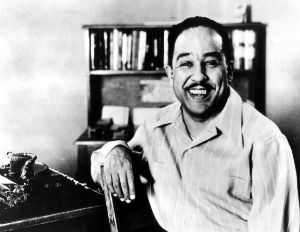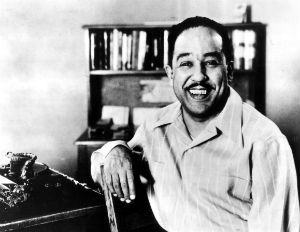Critical Analysis of Oppression:
Hughes is well aware of how the African American community was treated by the white majority population at the beginning of the 20th century, for he lived at the heart of the community in Harlem. This poem is thus Hughes’s way of telling his fellow African Americans not to lose hope, for they cannot be deprived of their rights forever. The dream that he mentions is a dream that is common to every single member of his community, that is, the dream of racial equality. Living as he did in the 1920s and 30s, Hughes was used to seeing the white American mainstream discriminating against African Americans on the basis of the color of their skins. At this time, many places closed their doors to the African Americans. They could not attend white-majority colleges and did not even get the same job opportunities as white Americans. This both angered and disappointed them. One particular concern of Hughes was with African American jazz musicians who were not only more talented than their white counterparts but who had in fact pioneered the genre and whose songs were often stolen by white jazz musicians. These African American jazz musicians were often denied entry to clubs where they played music through the same door as their majority-white audience. Hughes felt that they should be given more credit for their role in shaping the history of American music and that they should be respected enough to get the fame that they deserve.
Later when Hughes refers to states which are ruled over by strength alone, he is referring to two things. The first thing that he is referring to is many African nations that had still not gained their independence in the beginning of the 20th century. The second thing that he is referring to is the many immigrant populations in the United States itself, who were treated as second class citizens along with the African Americans. His message of hope goes out to them all. He is telling all his readers to stand up against oppression, and keep dreaming of a better tomorrow for their children. He is telling them to keep up their own spirits with the help of the music that they can make. This is an extremely important and inspirational message to give.
Stanza-wise Annotation of Oppression:
Please note: N= noun, V=verb, Adj=Adjective, Adv=Adverb, P=Preposition
1st stanza:
Available (Adv): Able to be used or obtained; at someone’s disposal
Dreamers (N): Plural form of the word “dreamer”, that is, a person who dreams or is dreaming
2nd stanza:
Lands (N): Plural form of the word “dreamer”, that is, a country or state
Steel (N): Used as a symbol or embodiment of strength and firmness
Jail (N): A place for the confinement of people accused or convicted of a crime
Poetic Devices in Oppression:
Rhyme scheme:
The poet does not use any identifiable rhyme scheme at any point in this poem. Only two lines in this poem rhyme with each other, and that too because of a coincidence – lines 3 and 5 of the first stanza. However, this absence of rhyme does not make the poem seem prosaic in any way. Rather it makes the poem seem conversational, and one can easily trace the progression of the poet’s thoughts here.
Rhetorical devices:
2nd stanza:
Personification:
This rhetorical device is used to bestow human qualities on something that is not human. In this stanza, the poet uses the device of personification with respect to night, steel, dream and song. Of these, he imagines the first two as colonial rulers who have taken over many countries. He imagines dream to be a figure that will walk back into the African-American peoples’ lives soon. Finally, he imagines the song to be a prisoner who has broken out of his prison cell.
Central Idea of Oppression:
The situation of oppressed people is not good. Oppression, in fact, takes away their very essence. They can see others suffering like themselves as well. However, they should not stop being optimistic for that reason. Instead, they should be assured that their dreams of justice will not remain unfulfilled forever.
Themes of Oppression:
Racial pride:
Hughes is known to have had a very strong sense of racial pride. He believed that the African American community has a distinct culture of its own and that they should do everything they can to preserve it. To be able to dream despite all odds, and to sing songs of hope in a moment of crisis, are specifically African American traits according to Hughes. That is why he believes that his people will never entirely relinquish either of the two.
Roots:
Like Toni Morrison after him, Hughes also believed that the African American community should never forget its roots. The fact that they had survived the slave trade, the Middle Passage and plantation life should give them strength to face anything they might be confronted with. One way of staying in touch with their roots was, of course, to hold on to their cultural memory. Another was to stay informed about their motherland – Africa. In the 1920s, many African nations such as Algeria, Angola, Kenya, Mozambique, and Namibia were still ruled over by colonialists. Hughes reminds his community that those people, who are their kinsmen in a way, are also suffering from them.
Solidarity:
Hughes and many other prominent thinkers and writers of the African American community believed that they needed to build up solidarity with other groups within the United States in order to succeed in their mission of obtaining equal rights as white American citizens. That was also in fact the strategy behind the Civil Rights Movement. During this movement, the African American activists joined hands with such diverse peoples as Communists and gay rights activists. This made their league stronger and their demands more urgent, and as a result, the United States government had to introduce a series of legislatures that brought about equal opportunities for education and employment for most of the previously oppressed groups within its borders. Decades before this, Hughes seems to be hinting at building up a similar kind of brotherhood between various communities in this very poem.
The Tone of Oppression:
This poem begins on a sad and pessimistic note, as the poet tells us about the absence of dreams and songs from the lives of the African American peoples. However, in the middle of the second stanza, this tone changes drastically, the poet is filled with hope and optimism as he asserts that those dreams and songs will soon return.
Conclusion:
This poem reflects many of Hughes’s strongest beliefs. Though the racial pride that he was known for may not be apparent in a first reading of the poem, one must only read between the lines to find evidence of it here. Towards the beginning of his writing career, in the 1920s, we also do not see him willing to accommodate his community into the American mainstream by absorbing certain characteristics of the white-majority population. That is why he does not envision his fellow African Americans giving up on their dreams or their music. In the 1920s, Hughes believed that there could be no compromise on that account. The African American community would hold on to its culture in order to build up enough self-confidence to demand equal rights as their white counterparts. This is exactly the message he gives us in this poem.
Some online learning platforms provide certifications, while others are designed to simply grow your skills in your personal and professional life. Including Masterclass and Coursera, here are our recommendations for the best online learning platforms you can sign up for today.
The 7 Best Online Learning Platforms of 2022
- Best Overall: Coursera
- Best for Niche Topics: Udemy
- Best for Creative Fields: Skillshare
- Best for Celebrity Lessons: MasterClass
- Best for STEM: EdX
- Best for Career Building: Udacity
- Best for Data Learning: Pluralsight


